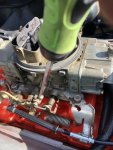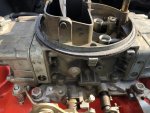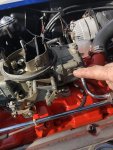Mad4slalom
CCCUK Member
Out in the 72 today I noticed a little flat spot had got worse, maybe since I lowered my idle speed. Not sure how a holley 650 double pumper works but am presuming there are idle jets and main jets. I am finding it hard to smoothly accelerate from a slow speed situation it is fine initially and if you keep on the gas , however, if you are tooltling along at 1500 revs and want to smoothly apply power, it hesitates and almost nothing happens then i am guessing the secondaries come in with a jolt and its all a bit manic. It is worse between 1800 to 2500 revs , any more than that and its all fine with plenty of power . Its just hard to get a smooth transition through the rev range.
i did read that a 650 dp holley is hard to tune out a flat spot on a motor with a manual box as they are better with an auto with more vaccuum.
are there any idle or other jets that i can remove and blow out or any other suggestions to get this running smoothly .
i did read that a 650 dp holley is hard to tune out a flat spot on a motor with a manual box as they are better with an auto with more vaccuum.
are there any idle or other jets that i can remove and blow out or any other suggestions to get this running smoothly .



